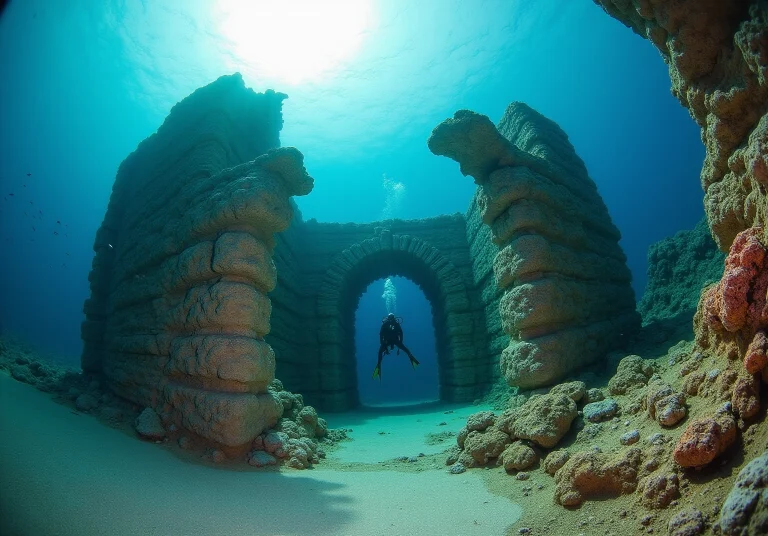Overview
This article invites you to dive into the fascinating world of ten ancient submerged cities! Each city, like Thonis-Heracleion and Pavlopetri, holds unique archaeological treasures and rich stories that reveal how environmental changes and human activities shaped these once-thriving civilizations.
Imagine wandering through these underwater wonders, where history comes alive and cultural tourism offers you a chance to connect with the past. It’s an exciting opportunity for exploration and preservation that you won’t want to miss!
Key Highlights:
- The Design Tourist offers travel guides that emphasise creativity and connexion to ancient submerged cities.
- Cultural tourism is projected to grow significantly, reflecting a desire for authentic experiences.
- Thonis-Heracleion, an ancient Egyptian port, showcases archaeological treasures and has only 5% explored.
- Pavlopetri, the oldest submerged city, features well-preserved ruins and highlights the importance of protecting archaeological sites.
- Port Royal in Jamaica was a pirate stronghold that sank in 1692, with ongoing excavations revealing its rich history.
- Baiae, a Roman resort town, offers insights into luxury and political manoeuvring among the elite before it submerged.
- Atlit Yam, a Neolithic village, provides evidence of early agricultural practises and community life dating back 9,000 years.
- The Yonaguni Monument in Japan raises debates about its origins, with features suggesting both natural and man-made influences.
- Derwent village in England serves as a reminder of the impact of human decisions on cultural heritage after its flooding for a reservoir.
- Neapolis, a Roman port city in Tunisia, highlights resilience against environmental challenges after being submerged by a tsunami.
- Villa Epecuén in Argentina, submerged in the 1980s, illustrates the effects of climate change and human intervention on landscapes.
Introduction
Beneath the waves of our oceans and lakes lies a hidden world brimming with history, where ancient civilizations once thrived, now lost to time. Imagine exploring the sunken streets of Thonis-Heracleion or wandering through the haunting ruins of Villa Epecuén! These submerged cities offer a unique glimpse into the past, inviting you—adventurers and history enthusiasts alike—to dive into their depths.
In this article, I’ll uncover ten extraordinary submerged cities, revealing the stories and archaeological wonders that await those brave enough to explore these underwater realms. What secrets do these ancient sites hold? How do they challenge our understanding of history and human resilience? Let’s find out together!
The Design Tourist: Discover Ancient Submerged Cities Through Expert Travel Guides
The Design Tourist, led by Karen LeBlanc, offers a unique lens through which to explore ancient submerged cities! By blending travel guides with captivating cultural narratives and a deep appreciation for design, you’re invited to uncover the fascinating stories behind these lost civilizations. Each destination isn’t just a spot on the map; it’s a rich tapestry of history waiting for you to dive in.
This approach encourages you to engage deeply with the past, making your journeys not just trips, but meaningful adventures. As Karen LeBlanc puts it, “What sets The Design Tourist apart from other travel blogs is its emphasis on creativity and connection.” This perspective is especially relevant now, as the cultural tourism market is projected to grow at a CAGR of 11.20% from 2025 to 2032, reflecting our increasing desire for authentic cultural experiences.
Take, for instance, the potential of Pavlopetri as a dive tourism destination—it beautifully illustrates how cultural narratives can enrich your travel experiences. The Design Tourist stands out in the evolving travel blogging landscape by emphasizing audience interaction through skilled storytelling and engaging content. You’ll find hands-on experiences and community events that enhance your discovery of ancient submerged cities. This makes it a fantastic resource for anyone looking to explore the depths of history beneath the waves!
Thonis-Heracleion: The Lost City of Ancient Egypt Beneath the Waves
Thonis-Heracleion, one of the ancient submerged cities, is a fascinating historical Egyptian port that lies submerged off the coast of Alexandria, showcasing its once-thriving maritime trade. Rediscovered in 2000 by the European Institute for Underwater Archaeology, this city is one of the ancient submerged cities that served as a crucial hub before it succumbed to the Mediterranean Sea, likely due to a mix of earthquakes and tidal waves. Ongoing underwater excavations in ancient submerged cities have revealed a treasure trove of archaeological wonders, including:
- Grand temples
- Colossal statues
- Over 700 ancient anchors—each piece telling a story about the city’s vibrant history and its role in international trade.
Among the remarkable discoveries are the remains of a temple dedicated to Amun Gereb, the principal deity of Thonis-Heracleion, along with numerous artifacts that reflect the rich cultural exchanges between Egyptians and Greeks. Imagine finding over 300 statuettes and amulets that provide insights into the religious practices of that time! As of 2025, only about 5 percent of the city has been explored, which means there’s still vast potential for future discoveries just waiting to be uncovered.
If you’re eager to dive into this underwater wonder, guided dives are available! This allows you to immerse yourself in the remnants of a civilization that flourished over a millennium ago. The charm of Thonis-Heracleion continues to captivate adventurers and history lovers alike, making it a must-visit location for anyone interested in the rich tapestry of Egyptian culture. So, are you ready to explore this hidden gem?
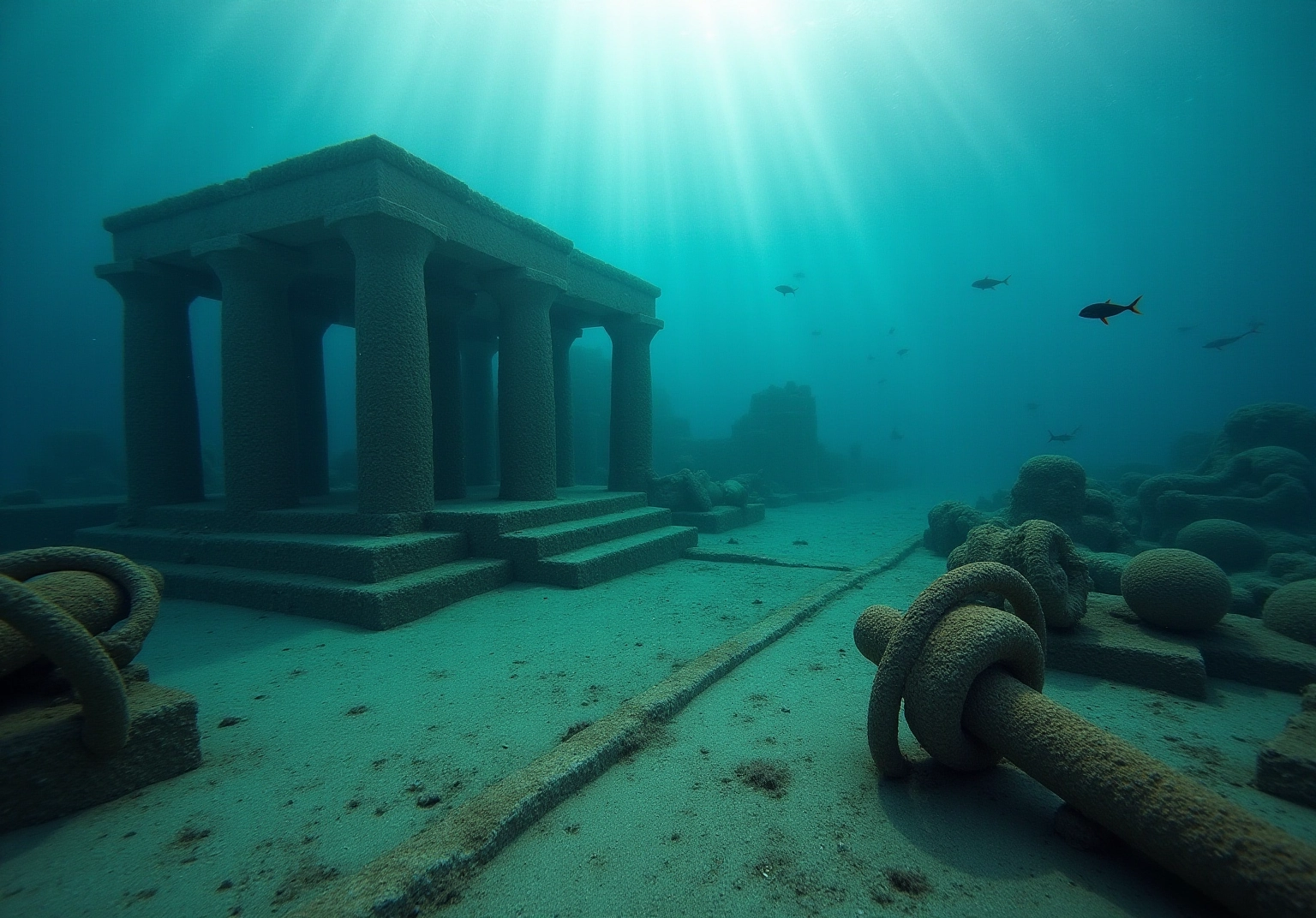
Pavlopetri: Exploring the Oldest Submerged City in the Mediterranean
Have you ever dreamed of exploring an underwater city? Pavlopetri, off the coast of Greece, is recognized as one of the ancient submerged cities in the world, with roots stretching back over 5,000 years! Imagine wandering through its well-preserved ruins, where you can see intact structures, streets, and burial grounds that offer a fascinating glimpse into the daily lives of its ancient inhabitants.
This hidden gem spans over 500,000 square feet, allowing divers like you to swim through the remnants of a Bronze Age town and marvel at its architectural layout firsthand. Current archaeological efforts have uncovered 15 buildings, each boasting up to 12 rooms, along with thousands of pottery fragments. These discoveries shed light on Pavlopetri’s role as a bustling port and trading hub among ancient submerged cities.
As you explore the submerged roads, you’ll not only witness the creativity of past civilizations but also help raise awareness about the importance of protecting these archaeological treasures. Experts believe that further excavations of ancient submerged cities will deepen our understanding of ancient maritime trade routes, commerce, and daily life, solidifying Pavlopetri’s significance in the study of ancient history.
And there’s more! Proposals for a coastal museum, guided snorkeling excursions, and glass-bottom boat trips highlight the area’s potential as a tourist destination. This is your chance to connect with this remarkable aquatic heritage! Recognized as part of the ancient submerged cities by UNESCO, Pavlopetri emphasizes the need to preserve and safeguard such priceless historical sites. So, are you ready to dive into this adventure?
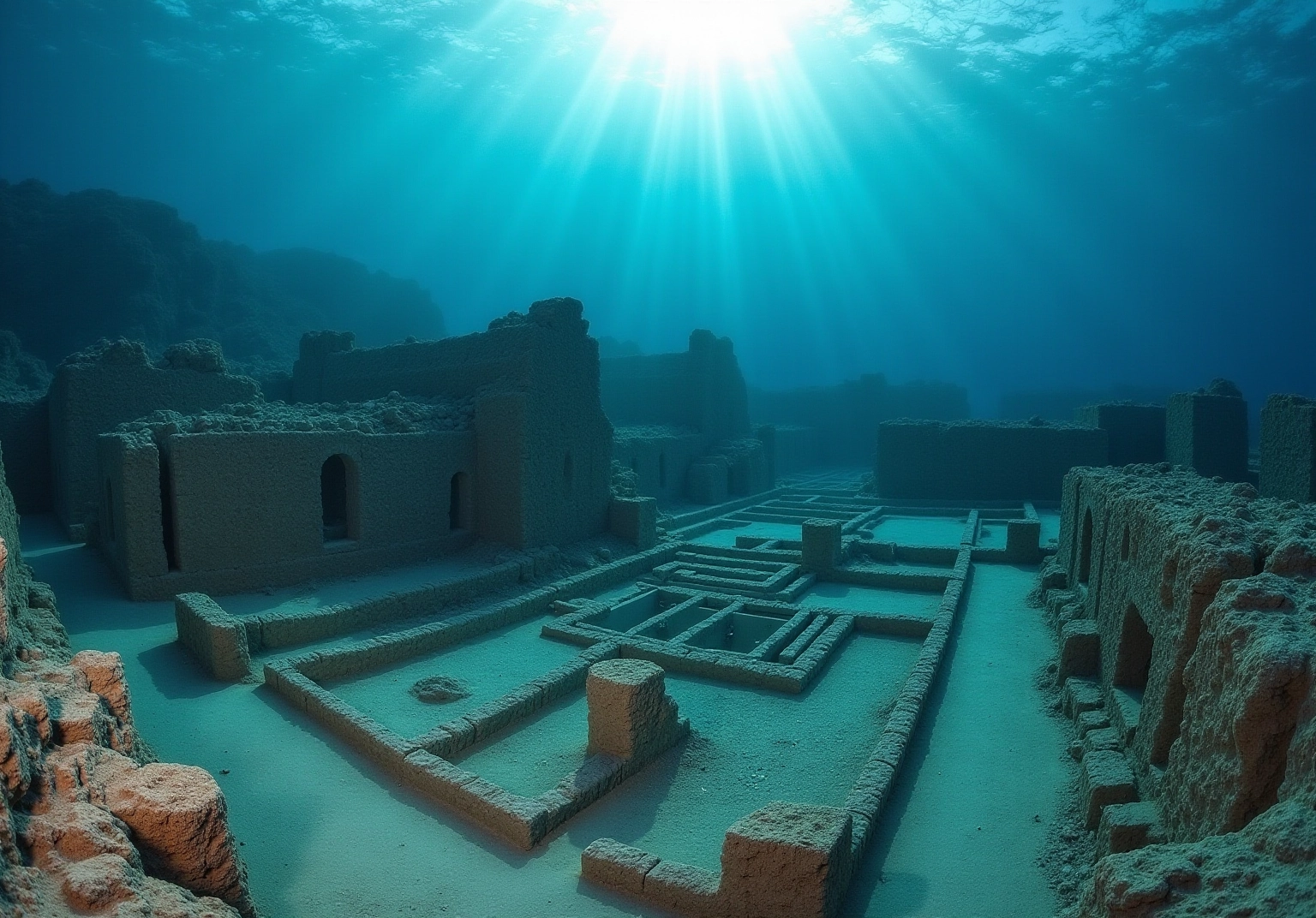
Port Royal: The Pirate City That Sank into the Sea
Once known as the ‘wickedest city on Earth,’ Port Royal was a lively pirate stronghold in the 17th century, famous for its wealth and wild lifestyle. Imagine wandering through this vibrant city in Jamaica, which is now considered one of the ancient submerged cities after a catastrophic earthquake in 1692 caused much of it to sink beneath the waves. Today, marine archaeologists are hard at work uncovering the remnants of ancient submerged cities in this notorious locale, revealing a treasure trove of artifacts that tell the tale of its hedonistic past.
Recent archaeological projects are still unveiling the secrets of Port Royal, enriching our understanding of its cultural significance as a pirate haven. If you’re feeling adventurous, you can join diving tours that explore the ancient submerged cities! You’ll have the chance to walk in the footsteps of pirates while connecting with ongoing discoveries that illuminate the lives of its fascinating inhabitants. What an incredible way to experience history firsthand!
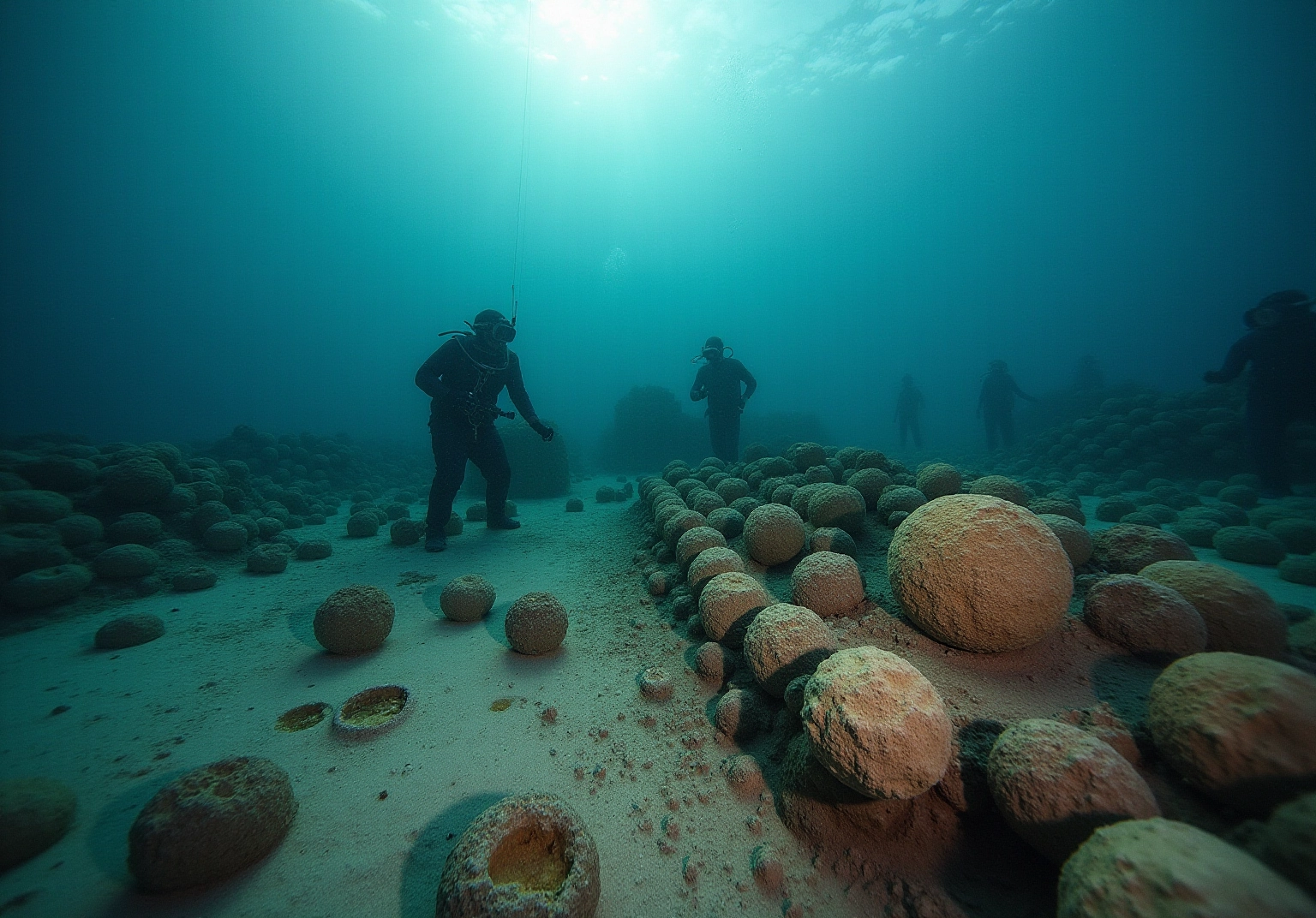
Baiae: The Underwater Roman Resort of Extravagance
Baiae, located near Naples, was once a luxurious resort town that the Roman elite adored, famous for its thermal baths and extravagant villas. Over the centuries, geological activity, especially after the eruption of Mount Vesuvius in 79 AD, caused this opulent city to become one of the ancient submerged cities, gradually sinking beneath the waves. Can you imagine what it was like during the reign of Emperor Hadrian, who expanded its infrastructure and amenities? Today, Baiae is an archaeological park underwater, where you can explore the ancient submerged cities that include remnants of grand villas adorned with intricate mosaics and marble columns.
Recent excavations have revealed stunning architectural features, including hydraulic systems and frescoes, showcasing the sophistication of Roman design. Pliny the Younger even documented Baiae’s splendor in his letters, giving us a fascinating glimpse into its historical significance. Did you know that Baiae was not just a retreat for relaxation but also a hub for political maneuvering and cultural exchange among the elite? You can immerse yourself in this rich history of ancient submerged cities through snorkeling and diving, experiencing firsthand the luxurious lifestyle of early Romans while uncovering the stories behind their sunken civilization.
As of 2025, ongoing discoveries continue to illuminate Baiae’s significance, making it a must-visit destination for anyone captivated by ancient history and underwater exploration. The preservation of Baiae beneath the sea protects its ruins from terrestrial decay, ensuring that its historical treasures remain accessible for future generations. So, are you ready to dive into the past and explore this fascinating underwater world?
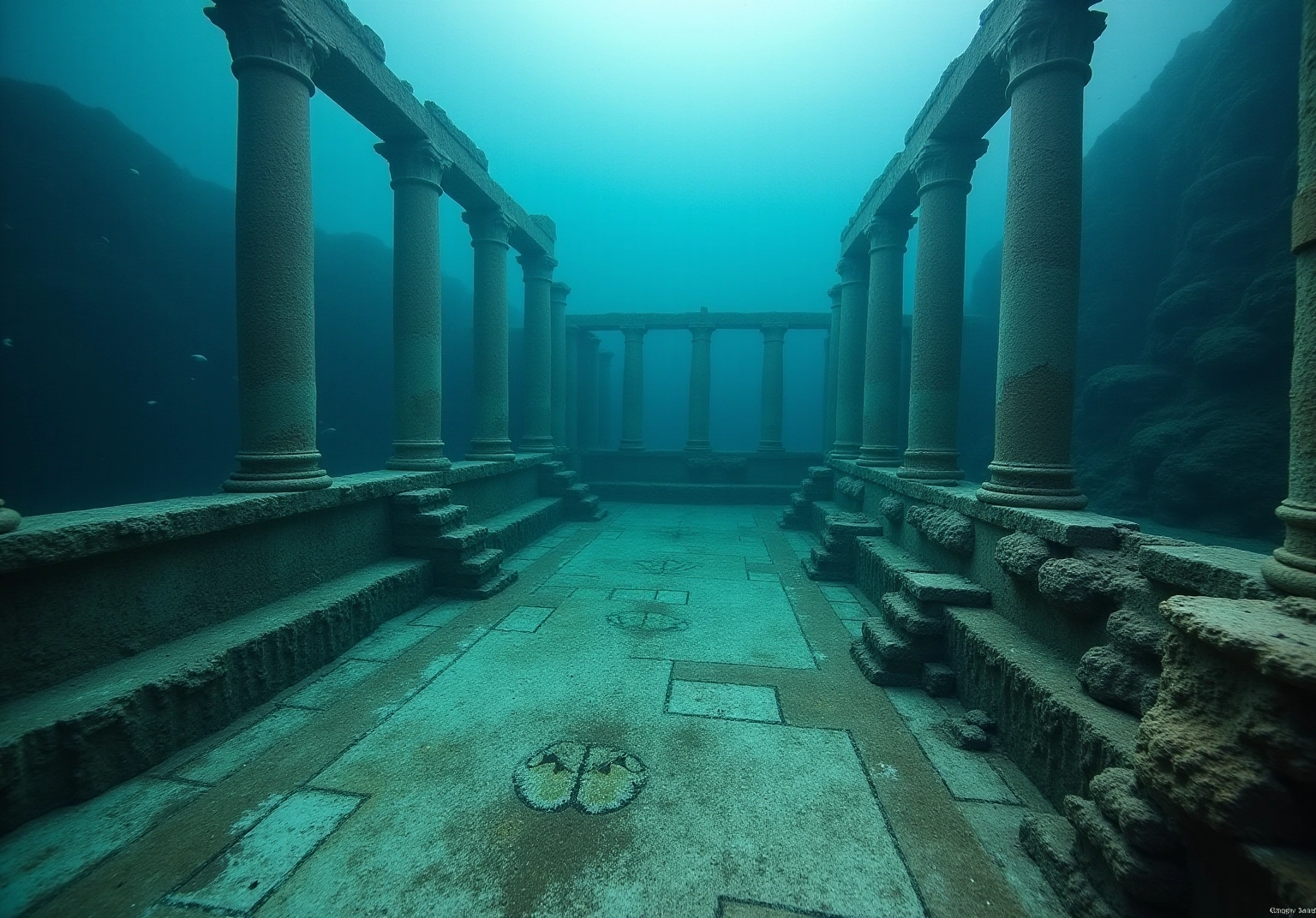
Atlit Yam: Unveiling the Secrets of a Neolithic Coastal City
Atlit Yam, which is off the coast of Israel, is recognized as one of the ancient submerged cities, with origins tracing back to the Neolithic period—around 9,000 years ago! Discovered in the 1980s by marine archaeologist Ehud Galili, this remarkable site reveals a treasure trove of evidence about early agricultural practices, fishing techniques, and communal living. You’ll find well-preserved remnants of houses, wells, and burial sites, all of which provide fascinating insights into the daily lives and social structures of its inhabitants.
Current research at Atlit Yam showcases a complex village economy that thrived on diverse food sources obtained through hunting, early herding, fishing, and farming. Just imagine discovering over 26,000 grains of charred emmer and naked wheats, along with various tree species! This indicates not only advanced agricultural practices but also a sophisticated understanding of crop storage. Plus, the presence of granary weevils hints that the community stored surplus grain, highlighting their agricultural skills.
Diving into Atlit Yam is like stepping into a unique time capsule of human history, where ancient submerged cities lie 8 to 12 meters beneath the Mediterranean Sea. Spanning roughly 6 hectares, it’s recognized as the largest and most well-preserved prehistoric settlement along the Mediterranean coastline, which may provide insights into ancient submerged cities. As researchers continue to explore Atlit Yam, they’re uncovering more about prehistoric water table exploitation, well construction, and the effects of rising sea levels on ancient communities. It’s interesting to note that evidence suggests contamination of well water likely led to the abandonment of Atlit Yam, showcasing the environmental challenges faced by its inhabitants.
Historians emphasize the significance of Atlit Yam in understanding the Neolithic era. Galili himself noted, “This makes it an extraordinary location that informs us about the lifestyle of the coastal peoples during the Neolithic period.” The ongoing discoveries at this underwater site not only shed light on the evolution of early societies but also highlight the intricate relationship these communities had with their marine environment. Atlit Yam truly stands as a vital focal point for both archaeological study and public interest—an invitation for you to explore the depths of our shared history!
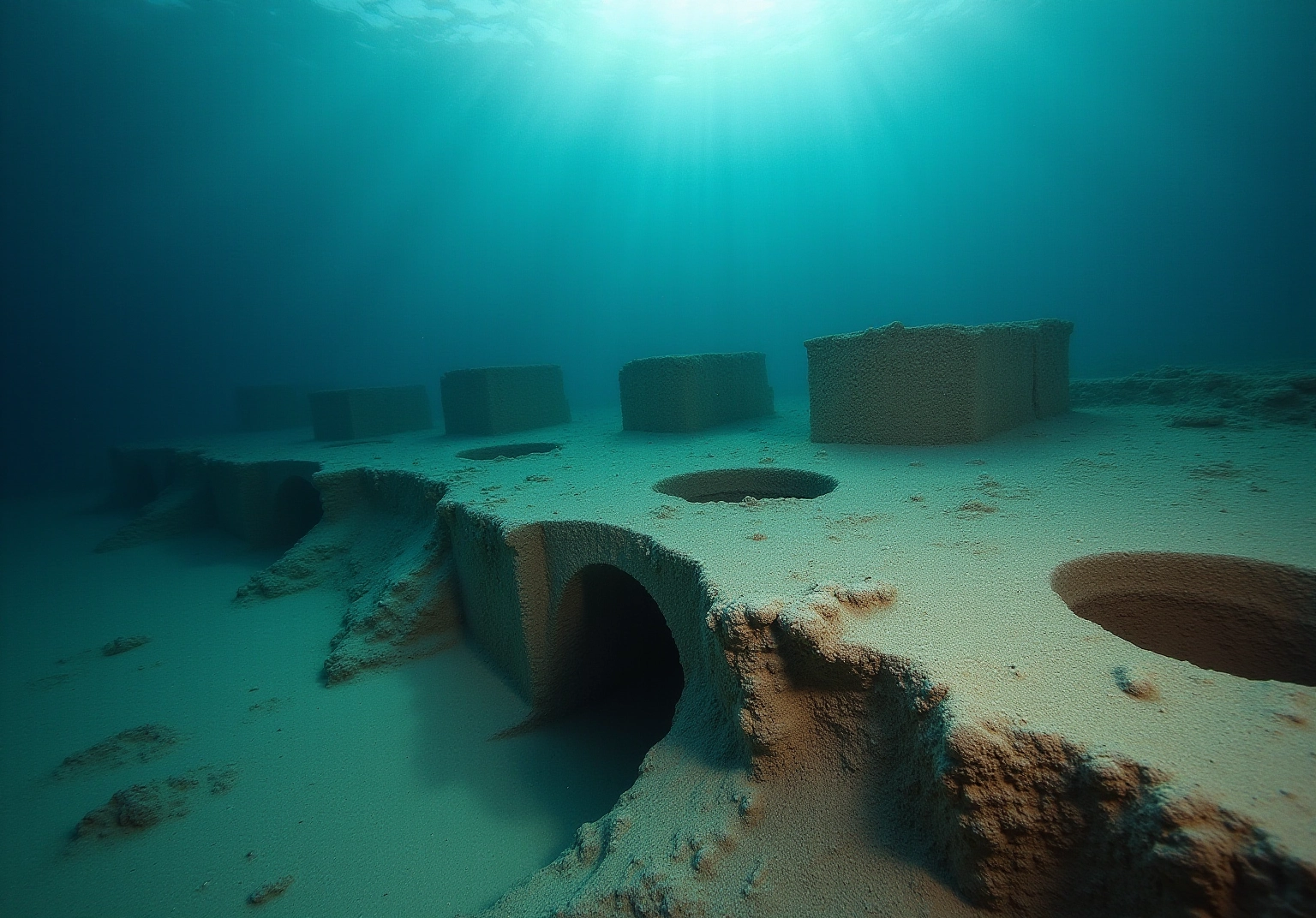
Yonaguni Monument: Nature or Ancient Man-Made Structure?
The Yonaguni Monument, an example of ancient submerged cities located off the coast of Japan, has sparked lively debates among archaeologists and geologists about its origins. Some experts believe it might be a man-made structure, pointing to its terraces, steps, and geometric shapes that remind us of ancient architectural designs. Marine geologist Masaaki Kimura, who has been researching this site for over 15 years, suggests that these formations could be remnants of ancient submerged cities, possibly linked to the legendary civilization of Mu. How intriguing is that? The monument’s intricate features captivate divers and researchers alike, offering a glimpse into a world lost beneath the waves!
In 2025, ongoing investigations have revealed even more about these submerged structures, utilizing advanced technologies like sonar mapping and 3D modeling to delve deeper into the site. These tools help researchers create detailed maps of the monument, shedding light on its origins and the balance between human influence and natural formation. The debate around the Yonaguni Monument’s origins continues to fascinate both the scientific community and the public. Some argue it’s a natural formation shaped by geological processes, while others insist that human influence is evident in its design.
Diving at the Yonaguni site presents adventurers with a unique opportunity to explore this mysterious underwater landscape. As you navigate the underwater terraces and stair-like formations, take a moment to reflect on the mysteries of human history and the natural forces that may have shaped this extraordinary site. The allure of the Yonaguni Monument lies not just in its breathtaking beauty but also in the profound questions it raises about ancient submerged cities and our understanding of their architectural capabilities. Often dubbed ‘Japan’s Atlantis,’ this monument continues to inspire curiosity and debate, echoing broader themes in archaeology regarding evidence and interpretation.
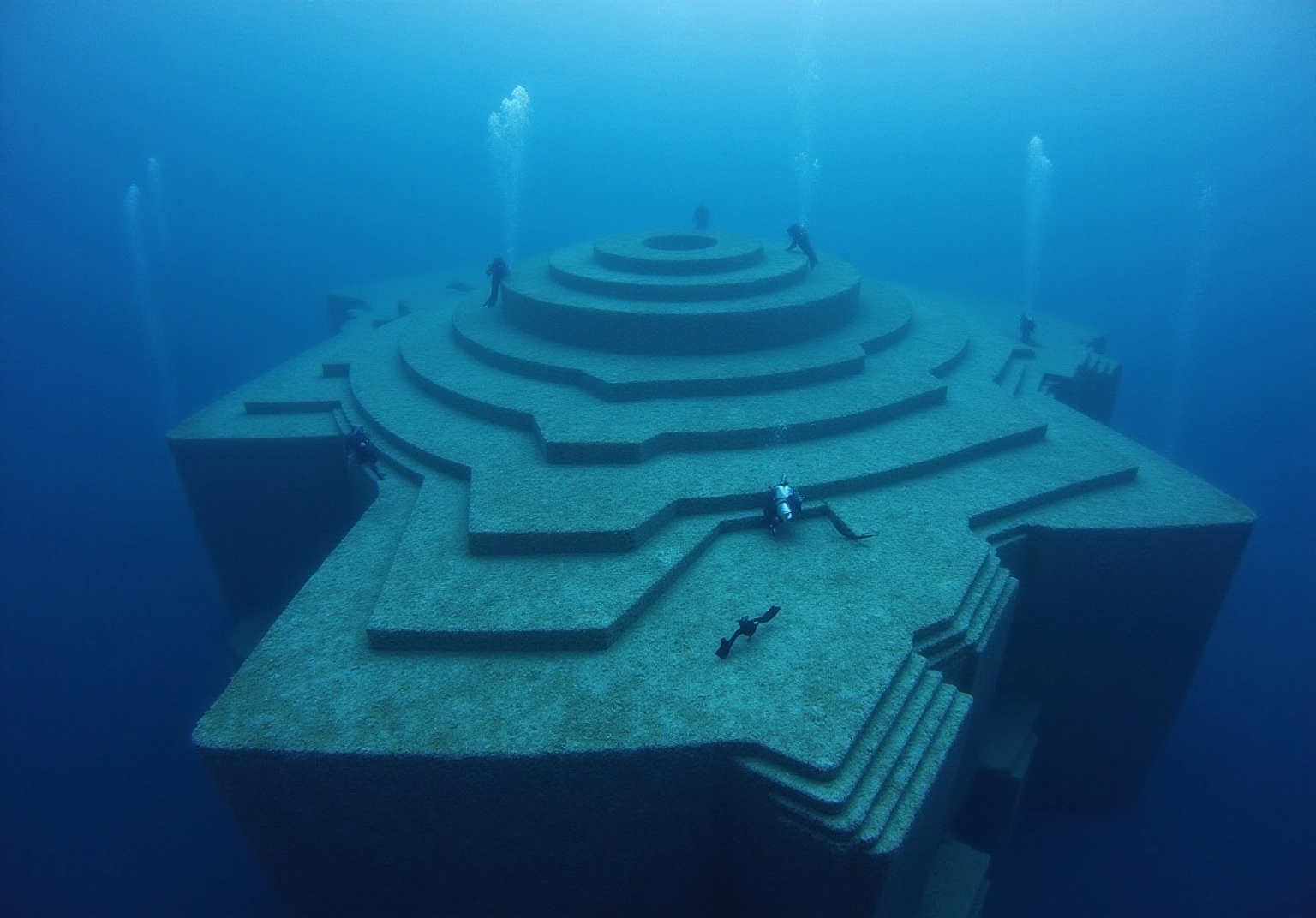
Derwent: The English Village Lost to the Waters
Have you ever heard of the village of Derwent in Derbyshire, England? It was deliberately flooded in 1944 to create the Ladybower Reservoir. Once a thriving community, this village was dismantled, and now its remains lie beneath the water. Isn’t it fascinating? Occasionally, during droughts, the ruins resurface, offering a haunting glimpse into the past. This story serves as a poignant reminder of how human decisions can impact communities and the environment. It makes for a compelling site for anyone interested in the interplay between history and nature.
Historians have pointed out that such decisions often lead to the erasure of cultural heritage. One historian even noted, “The choices made in the name of progress can have lasting consequences on the identity of communities.” Today, the charm of exploring these underwater ruins attracts visitors eager to engage with tales of history. It reflects a rising trend in the exploration of ancient submerged cities, which enhances our understanding of the delicate balance between human growth and environmental conservation. So, if you’re ever in the area, make sure to check it out—you might just find a story waiting to be uncovered!
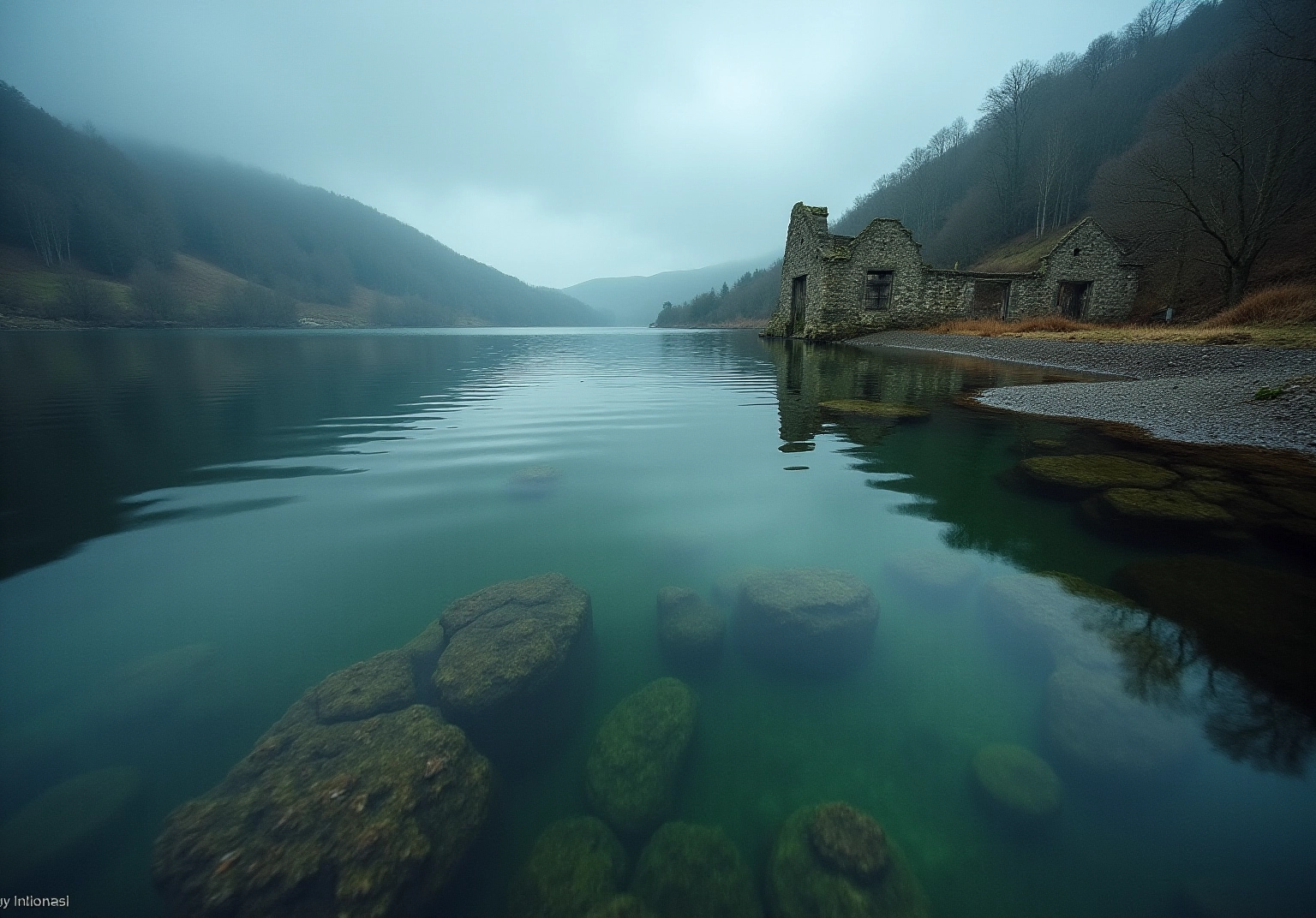
Neapolis: The Ancient City of Tunisia Now Underwater
Neapolis, a historic Roman city located off the coast of Tunisia, was once a bustling port before a tsunami caused it to join the ranks of ancient submerged cities in the 4th century AD. Imagine wandering through the underwater ruins of ancient submerged cities, where recent excavations have revealed extensive streets, buildings, and fascinating artifacts! These discoveries offer incredible insights into the daily lives of its inhabitants.
This site stands as a testament to the resilience of ancient civilizations and their remarkable ability to adapt to environmental challenges. Isn’t it amazing to think about how they thrived in such dynamic conditions? For history enthusiasts and divers alike, Neapolis is a captivating destination just waiting to be explored. So why not dive into this underwater adventure and uncover the stories that lie beneath the waves?
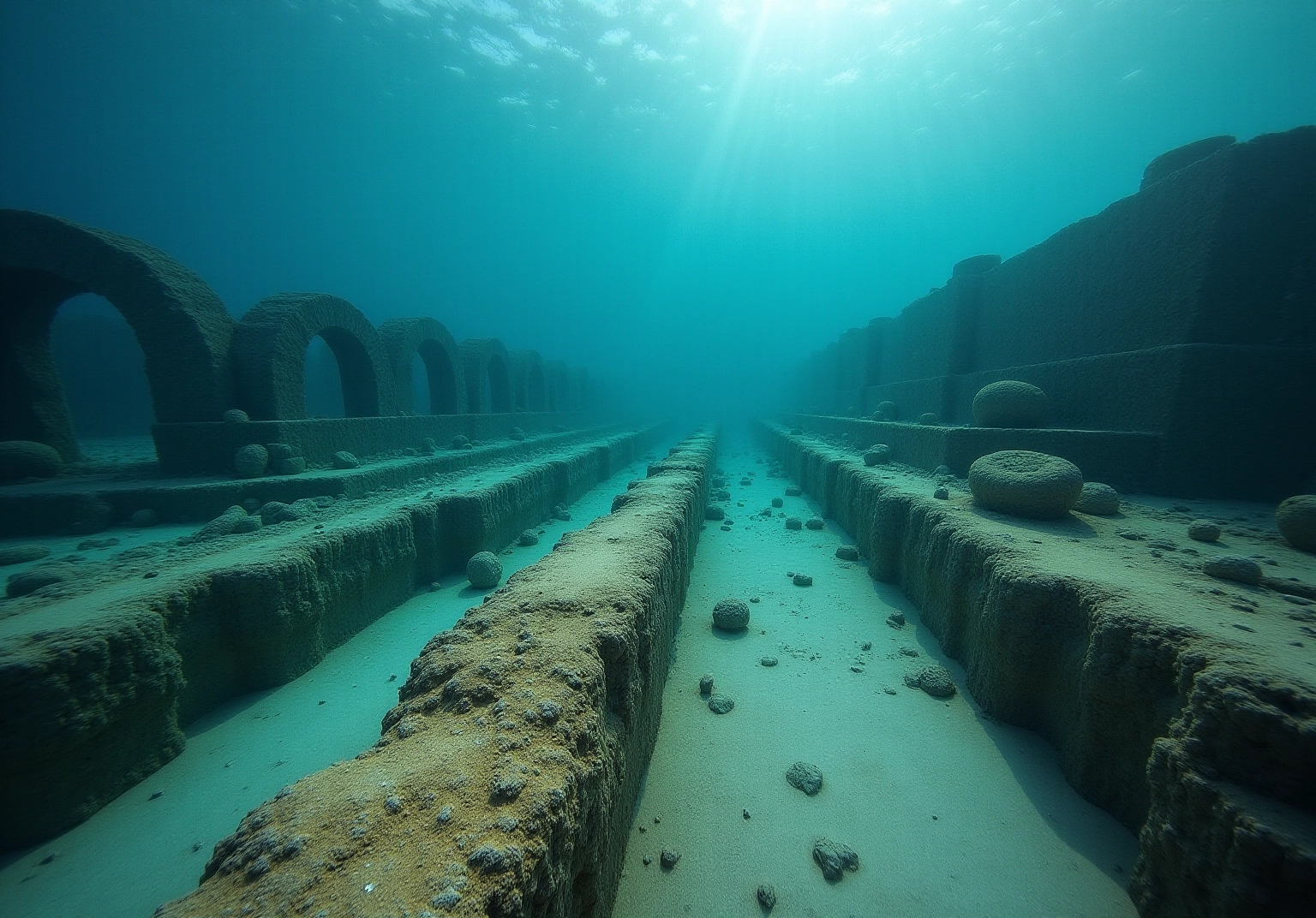
Villa Epecuén: The Submerged Town of Argentina’s Past
Have you ever heard of Villa Epecuén? Once a bustling tourist spot in Argentina, this fascinating place is now considered one of the ancient submerged cities, having been submerged in the 1980s after a dam failure caused the waters of Lake Epecuén to rise dramatically. For nearly 25 years, the town was one of the ancient submerged cities, becoming a ghostly reminder of its vibrant past. But guess what? Today, as the waters recede, the ruins of Villa Epecuén, one of the ancient submerged cities, are emerging, drawing in curious visitors eager to explore its history!
This site is more than just a collection of ruins; it serves as a powerful reminder of how climate change and human intervention can shape our landscapes. If you’re interested in environmental issues, this poignant destination is a must-visit! You’ll find that Villa Epecuén not only tells a story of loss but also sparks conversations about the future of our planet. So, why not add it to your travel plans? You might just discover something truly remarkable!
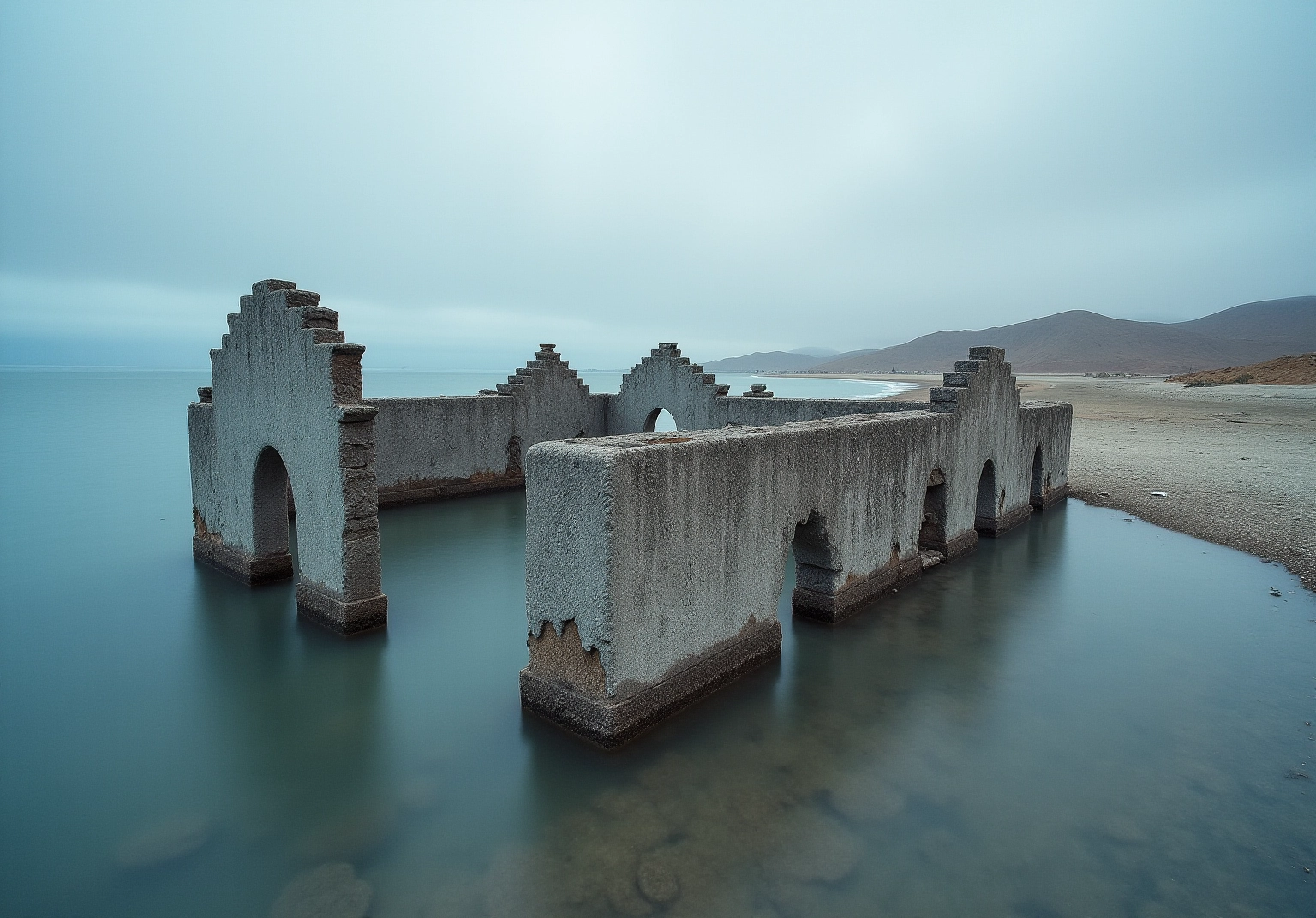
Conclusion
Exploring ancient submerged cities is such an exciting opportunity to connect with lost civilizations and their rich histories! These underwater sites are not just relics of the past; they’re like windows into the lives and cultures of those who came before us. From the vibrant streets of Thonis-Heracleion to the mysterious formations of the Yonaguni Monument, each submerged city invites you to dive into a world bursting with stories just waiting to be uncovered.
As you embark on this journey, you’ll find key destinations like Pavlopetri, Port Royal, and Baiae, each offering unique archaeological significance and valuable lessons about ancient maritime societies. The ongoing discoveries at these sites remind us of the importance of preserving our cultural heritage while deepening our understanding of how human activity and environmental changes have shaped our world. Engaging with these underwater treasures not only enriches your travel experiences but also highlights the need for responsible tourism and conservation efforts.
Ultimately, the allure of ancient submerged cities lies in their ability to spark curiosity and reflection. As you set out to uncover the mysteries beneath the waves, you’ll be reminded of the delicate balance between history and nature. Whether you’re planning a diving adventure or simply seeking to learn more about these captivating sites, your journey into the depths of our shared past promises to leave a lasting impact. So, embrace the opportunity to explore these submerged wonders and contribute to the ongoing dialogue about preserving our planet’s historical and cultural legacy!
Frequently Asked Questions
What is The Design Tourist about?
The Design Tourist, led by Karen LeBlanc, offers travel guides that explore ancient submerged cities through captivating cultural narratives and a focus on design, inviting travelers to uncover the stories behind lost civilizations.
How does The Design Tourist enhance travel experiences?
The Design Tourist emphasizes creativity and connection, encouraging a deep engagement with history. This approach transforms trips into meaningful adventures, particularly relevant as the cultural tourism market grows.
What is Thonis-Heracleion?
Thonis-Heracleion is an ancient submerged Egyptian port located off the coast of Alexandria, known for its significant maritime trade before it was submerged, likely due to earthquakes and tidal waves.
What archaeological discoveries have been made in Thonis-Heracleion?
Ongoing excavations have revealed grand temples, colossal statues, over 700 ancient anchors, and artifacts, including statuettes and amulets that provide insights into the cultural exchanges between Egyptians and Greeks.
How much of Thonis-Heracleion has been explored?
As of 2025, only about 5 percent of Thonis-Heracleion has been explored, indicating a vast potential for future discoveries.
Are there opportunities for guided dives in Thonis-Heracleion?
Yes, guided dives are available, allowing adventurers to immerse themselves in the remnants of this ancient civilization.
What is Pavlopetri and its significance?
Pavlopetri, located off the coast of Greece, is recognized as one of the oldest submerged cities in the world, with roots over 5,000 years old, showcasing well-preserved ruins that offer insights into ancient daily life.
What discoveries have been made in Pavlopetri?
Archaeological efforts in Pavlopetri have uncovered 15 buildings, thousands of pottery fragments, and remnants of a Bronze Age town, highlighting its role as a port and trading hub.
What initiatives are being proposed to enhance tourism in Pavlopetri?
Proposals include a coastal museum, guided snorkeling excursions, and glass-bottom boat trips to promote the area’s rich aquatic heritage.
Why is preserving sites like Pavlopetri important?
Preserving ancient submerged cities like Pavlopetri is crucial for safeguarding historical sites and deepening our understanding of ancient maritime trade routes and daily life, with recognition from UNESCO emphasizing their significance.









